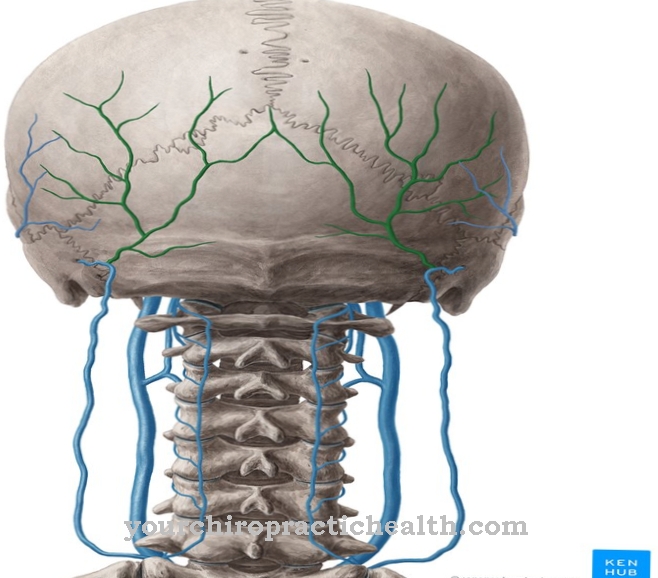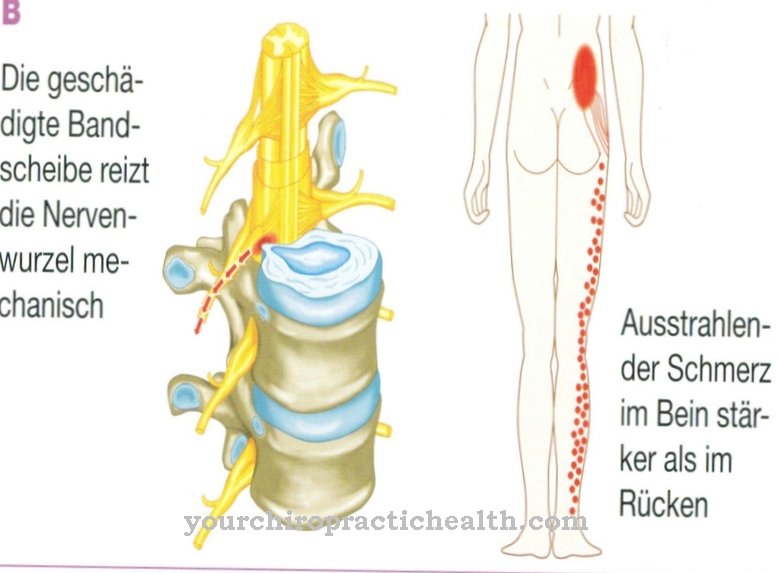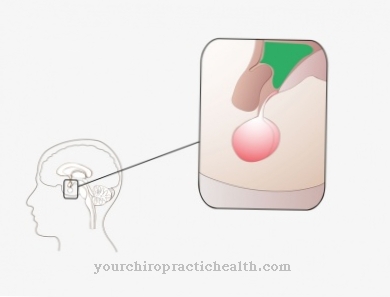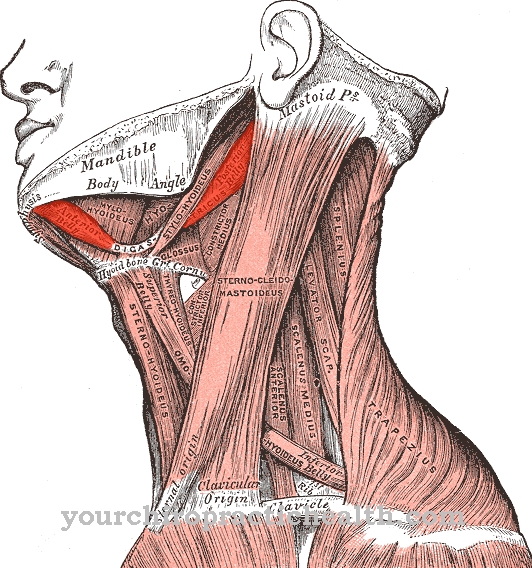The structure of the human foot is an adaptation to the upright gait. That forms the bony basis for this requirement Foot skeleton with its typical structure.
What is the foot skeleton?
The construction of the foot skeleton forms the basis for the physiognomy and function of the foot. It consists of a total of at least 26 bones, which can be topographically divided into 3 sections. The rear foot is made up of the 7 tarsal bones, which are connected to the ends of the lower leg bones via the talus.
The forefoot is formed by the bones of the 5 toes, of which there are 2 in the big toe and 3 in each of the other toes. The 5 metatarsal bones are located between the two parts mentioned. They each pull to a phalanx of the toe and together with them form the so-called rays. Sesamoid bones can appear in variable numbers on the foot skeleton. On the underside of the first metatarsal in the area of the metatarsophalangeal joint, 2 can be found regularly. The 3 sections of the foot skeleton are architecturally constructed in such a way that loads while walking and standing can be optimally compensated, even though the total mass of all foot bones is very small.
Anatomy & structure
The 7 tarsal bones can be divided into 2 groups. The ankle bone (talus), the heel bone (calcaneus) and the navicular bone (os naviculare) are involved in the upper and lower ankle.
While movements take place in these connections, all other contact points of the tarsal bones are tight joints (amphiarthroses) with very little mobility. This also applies to the contact points to the bases of the metatarsals, which, in addition to the navicular bone, form the 3 cuneiform bones (ossa cuneiformia) and the cuboid bone (cuboid bone).
The metatarsal and toe bones are tubular bones that are divided into 3 basic components, base, body and head. While the metatarsals also have little mobility, all other connections are real joints.From the inside out, the toes and metatarsals are numbered consecutively from 1 to 5. Together they result in the respective rays, with the big toe and metatarsal bone 1 forming the first ray, for example, and the little toe and metatarsal bone 5 forming the fifth ray. Except for the big toe, which has only 2, all toes have 3 links (phalanges) that are articulated to one another.
Function & tasks
The foot skeleton is an architectural masterpiece with which enormous loads can be distributed so cheaply that the individual parts only have a relatively low load and only little bone mass is required. The first key point in this system is the talus. It takes all the weight that is transferred to it via the lower leg bones and distributes it in different directions.
A part is transferred to the subsurface via the calcaneus, while other parts are diverted forward via the ankle joint and distributed to the remaining tarsal bones and the metatarsus. This process minimizes the stress on the individual parts and saves weight.
This system is ideally supported by the arch construction of the foot with its 3 support points. The tarsus and metatarsus are arranged in such a way that they form the bony framework of the longitudinal arch of the foot. The inner row, which consists of the navicular bone, the 3 cuneiform bones and the metatarsal bones 1 to 3, rests on the outer bones, the calcaneus, the cuboideum and the metatarsal bones 4 and 5. It stretches like an arch from the Heel to the metatarsophalangeal joint of the big toe. The transverse arch of the foot is created by the wedge shape of the bones involved and tight ligaments that are located under the metatarsal and tarsal bones.
It also stretches as an arch from the outer edge of the foot to the inner edge with contact points to the ground on the ball of the big and small toes. Together with numerous supporting ligaments and muscles, this creates a buffer system that, as a solid yet resilient structure, ideally distributes the loads over many parts of the bone. The special arrangement of the foot bones is also the basic condition for rolling when walking. The ankle and toe joints ensure the mobility of the foot, which is important when walking, running, jumping and other motor activities.
Diseases
External force can cause fractures in all areas of the foot skeleton, which can cause painful impairments on the one hand and severe functional impairments on the other.
Breaks in this area always mean that the foot must not be loaded for a while, regardless of whether surgical or conservative therapy has been carried out. The so-called march fractures represent a special form. They are not the result of trauma, but rather fatigue fractures in the metatarsal or tarsal bones, which arise as a result of overloading. Although the symptoms are different, the functional restrictions for those affected are the same.
Changes in the vault construction often arise as a result of an unfavorable disposition in connection with high loads, such as excess weight. In the so-called arched foot, the longitudinal arch sinks, in the splayfoot the transverse arch and in the flat foot both. The result is that the loads can no longer be optimally buffered and more and more bone points become load-bearing elements. This not only leads to an unfavorable pressure load on the bones, but also to a change in the overall statics with an additional load on the knee and hip joints and the spine.
Deformities of the toes lead on the one hand to unpleasant pressure discomfort and on the other hand to impaired walking. Hallux valgus often occurs as a result of the deviation of the first metatarsal bone in a splayfoot with a change in position in the metatarsophalangeal joint of the big toe. The big toe deviates and is pulled outward. Hammer and claw toes lead to the fact that the toe extension is increasingly restricted and complete rolling is prevented.













.jpg)

.jpg)
.jpg)











.jpg)